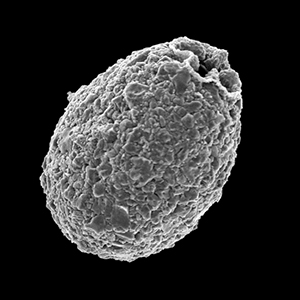First ecological analysis of lacustrine testate amoebae in Guatemala: A case study from the highland Lake Chichoj

Submitted: 20 July 2022
Accepted: 18 November 2022
Published: 30 November 2022
Accepted: 18 November 2022
Abstract Views: 2233
PDF: 320
HTML: 48
HTML: 48
Publisher's note
All claims expressed in this article are solely those of the authors and do not necessarily represent those of their affiliated organizations, or those of the publisher, the editors and the reviewers. Any product that may be evaluated in this article or claim that may be made by its manufacturer is not guaranteed or endorsed by the publisher.
All claims expressed in this article are solely those of the authors and do not necessarily represent those of their affiliated organizations, or those of the publisher, the editors and the reviewers. Any product that may be evaluated in this article or claim that may be made by its manufacturer is not guaranteed or endorsed by the publisher.
Similar Articles
- Jianming Deng, Yunlin Zhang, Boqiang Qin, Xiaolong Yao, Yubing Deng, Trends of publications related to climate change and lake research from 1991 to 2015 , Journal of Limnology: Vol. 76 No. 3 (2017)
- Andrew J. Tanentzap, Erik J. Szkokan-Emilson, Cyndy M. Desjardins, Chloe Orland, Kurt Yakimovich, Randy Dirszowsky, Nadia Mykytczuk, Nathan Basiliko, John Gunn, Bridging between litterbags and whole-ecosystem experiments: a new approach for studying lake sediments , Journal of Limnology: Vol. 76 No. 2 (2017)
- Didier L. Baho, Stina Drakare, Richard K. Johnson, Craig R. Allen, David G. Angeler, Is the impact of eutrophication on phytoplankton diversity dependent on lake volume/ecosystem size? , Journal of Limnology: Vol. 76 No. 1 (2017)
- Emanuel Braig, Christoph Mayr, Gerald Kirchner, Andrea Hofmann, Uta Raeder, Arnulf Melzer, Fifty years of eutrophication and lake restoration reflected in sedimentary carbon and nitrogen isotopes of a small, hardwater lake (south Germany) , Journal of Limnology: Vol. 72 No. 2 (2013)
- Cleber C. Figueredo, Ricardo M. Pinto-Coelho, Ana Maria M.B. Lopes, Pedro H.O. Lima, Björn Gücker, Alessandra Giani, From intermittent to persistent cyanobacterial blooms: identifying the main drivers in an urban tropical reservoir , Journal of Limnology: Vol. 75 No. 3 (2016)
- Külli Kangur, Peeter Kangur, Kai Ginter, Kati Orru, Marina Haldna, Tõnu Möls, Andu Kangur, Long-term effects of extreme weather events and eutrophication on the fish community of shallow Lake Peipsi (Estonia/Russia) , Journal of Limnology: Vol. 72 No. 2 (2013)
- Piero Guilizzoni, Suzanne N. Levine, Marina Manca, Aldo Marchetto, Andrea Lami, Walter Ambrosetti, Achim Brauer, Stefano Gerli, Elisabetta A. Carrara, Angelo Rolla, Licia Guzzella, Davide A.L. Vignati, Ecological effects of multiple stressors on a deep lake (Lago Maggiore, Italy) integrating neo and palaeolimnological approaches , Journal of Limnology: Vol. 71 No. 1 (2012)
- Francisco Diogo R. Sousa, Alexandre V. Palaoro, Lourdes M.A. Elmoor-Loureiro, Alexey A. Kotov, Predicting the invasive potential of the cladoceran Daphnia lumholtzi Sars, 1885 (Crustacea: Cladocera: Daphniidae) in the Neotropics: are generalists threatened and relicts protected by their life-history traits? , Journal of Limnology: Vol. 76 No. 2 (2017)
- Jordi Catalan, John C. Donato Rondón, Perspectives for an integrated understanding of tropical and temperate high-mountain lakes , Journal of Limnology: Vol. 75 No. s1 (2016): Proceedings of the 6th National Congress of Limnology
- Krzysztof Zawierucha, Marta Ostrowska, Tobias R. Vonnahme, Miloslav Devetter, Adam P. Nawrot, Sara Lehmann, Małgorzata Kolicka, Diversity and distribution of Tardigrada in Arctic cryoconite holes , Journal of Limnology: Vol. 75 No. 3 (2016)
You may also start an advanced similarity search for this article.

 https://doi.org/10.4081/jlimnol.2022.2082
https://doi.org/10.4081/jlimnol.2022.2082





